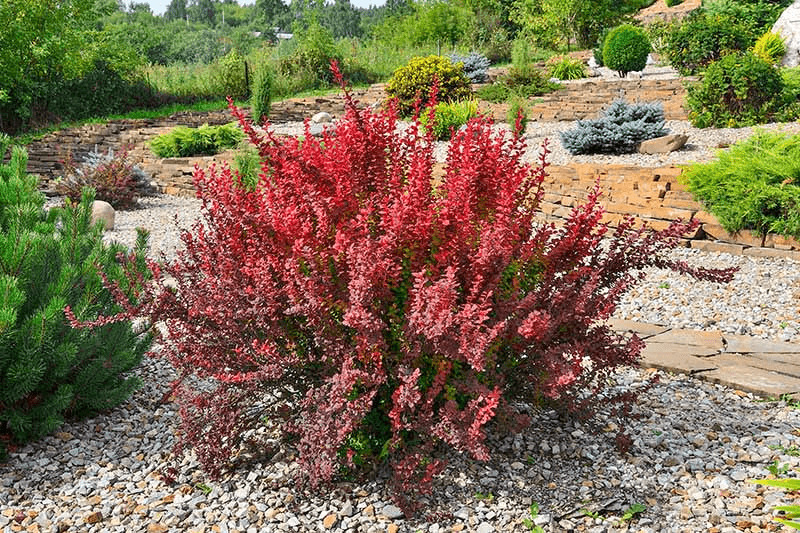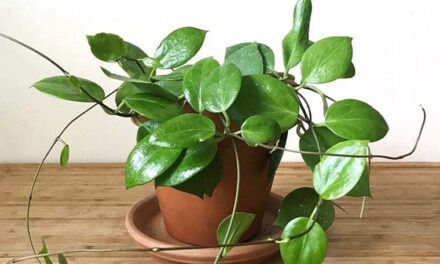Barberry plants (Berberis spp.) are known for their stunning foliage, vibrant colors, and versatility in garden landscapes. These hardy and low-maintenance shrubs offer a wealth of benefits, including beautiful flowers, attractive berries, and a natural deterrent to pests. Whether you're a seasoned gardener or a beginner, this comprehensive guide will walk you through the process of growing barberry plants and help you create a vibrant, eye-catching display in your garden.

Choosing the Right Barberry Variety
Barberry plants come in various species and cultivars, each with its unique characteristics. Consider factors such as growth habit, size, color, and sun exposure requirements when selecting a barberry variety for your garden. Some popular choices include Berberis thunbergii, Berberis x ottawensis, and Berberis vulgaris.
Ideal Growing Conditions
Barberry plants are adaptable to a wide range of growing conditions. However, they thrive best in well-draining soil with a slightly acidic to neutral pH. Ensure that the planting location receives ample sunlight, preferably six to eight hours a day. Barberry plants are generally hardy and can tolerate cold temperatures, but they prefer sheltered spots to protect them from harsh winds.
Planting Barberry
Spring or fall is the best time to plant barberry shrubs. Follow these steps for successful planting: a. Dig a hole twice the width and depth of the plant's root ball. b. Gently remove the plant from its container and place it in the hole, ensuring that the soil level matches the surrounding ground. c. Backfill the hole with soil, firming it gently around the roots. d. Water the plant thoroughly to settle the soil.
Watering and Mulching
Barberry plants have moderate water requirements. Water deeply but infrequently, allowing the soil to dry out between waterings. Avoid overwatering, as excessive moisture can lead to root rot. Applying a layer of organic mulch around the base of the plant helps retain soil moisture, suppress weeds, and insulate the roots during extreme temperatures.
Pruning and Maintenance
Barberry plants have a naturally pleasing shape and require minimal pruning. However, occasional pruning can help maintain their size, shape, and overall health. Prune in early spring before new growth emerges, removing any dead, damaged, or crossing branches. Wear gloves when pruning barberry, as some species have thorns. Regularly inspect the plant for signs of pests or diseases, such as aphids or rust, and take appropriate measures if needed.
Fertilizing
Barberry plants are generally not heavy feeders but can benefit from a balanced slow-release fertilizer in early spring. Follow the manufacturer's instructions for application rates and ensure you water the plant thoroughly after fertilizing.
Dealing with Pests and Diseases
Barberry plants have natural pest-repellent properties, thanks to compounds such as berberine present in their leaves. However, they may still encounter common pests like aphids, scale insects, or spider mites. Regularly inspect the plants for any signs of infestation and treat them accordingly using organic or chemical control methods. Barberry shrubs are generally resistant to diseases but can occasionally be affected by rust or fungal infections. Prune and dispose of any infected branches to prevent the spread.
Propagation
You can propagate barberry plants through various methods, including seeds, softwood cuttings, or division. Collect seeds from ripe berries, clean them, and sow them in a seed-starting mix. Softwood cuttings can be taken during late spring or early summer and rooted in a well-draining potting mix. Division involves separating the plant's root ball into smaller sections and replanting them individually. Each method has its own requirements and timelines, so research and choose the one that suits you best.
Barberry Landscaping Ideas
Barberry plants are incredibly versatile and can be used in various landscaping designs. Here are a few ideas to incorporate barberry shrubs into your garden:
Create colorful hedges: Plant barberry shrubs in a row to form a vibrant and low-maintenance hedge. Mix different varieties to add contrasting colors and textures.
Accentuate garden beds: Use barberry as accent plants to bring splashes of color to garden borders or flower beds. Their vibrant foliage can complement other plants and provide a striking visual contrast.
Eye-catching focal points: Plant a mature barberry shrub as a standalone specimen in your garden. Its vibrant colors and unique form will make it an attention-grabbing focal point.
Container gardening: Grow barberry plants in containers for small spaces or to add interest to patios and balconies. Choose compact varieties that fit well in pots and provide adequate drainage.
Precautions and Considerations: While barberry plants are generally low-maintenance and offer numerous benefits, it's important to be aware of a few considerations:
In some regions, certain barberry species are considered invasive. Check with your local agricultural extension office or consult reputable sources to ensure you choose non-invasive varieties suitable for your area. Barberry shrubs may have thorns, so handle them with care during planting, pruning, and maintenance. Wear gloves and protective clothing to avoid injuries. Some people may have allergic reactions to barberry plants. If you have known allergies or sensitivities, take necessary precautions when working with barberry, such as wearing protective gear and avoiding direct contact.
Growing barberry plants can be a rewarding and enjoyable experience, offering an array of colorful foliage and unique landscaping possibilities. With proper selection, planting, and care, you can create a vibrant and low-maintenance garden adorned with these captivating shrubs. Follow the guidelines outlined in this comprehensive guide, adapt them to your specific growing conditions, and watch as your barberry plants thrive and become a stunning addition to your outdoor space. Embrace the beauty of barberry and let nature's ornamental delight flourish in your garden!



















